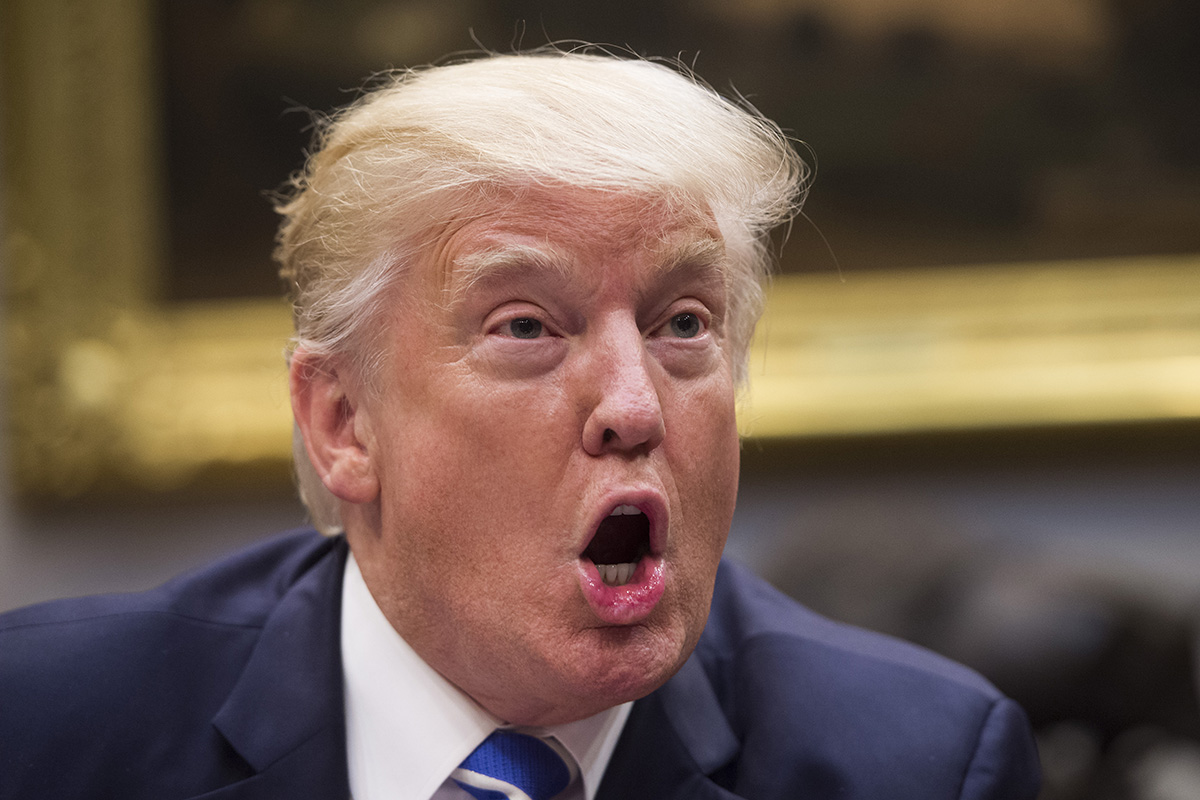BERLIN – US President Donald Trump’s nearly eight months in office have been characterised by a series of disturbing political developments. But Trump is not entirely to blame. His presidency is just the latest act in a long-running political tragedy.
From a foreign-policy perspective, the problem began in the 1990s, when the United States squandered the post-Cold War peace dividend. With regard to domestic policy, the failures began even earlier: from Reaganomics in the 1980s to Obamacare in the 2010s, major policies have often overpromised and underperformed, while failing to address underlying problems.
Of course, US politicians are rarely short on lofty rhetoric – from Ronald Reagan’s “Morning in America” campaign to Barack Obama’s “Yes, we can” slogan to Donald Trump’s “America First” refrain. And, beginning with John F. Kennedy, presidents have likened the US to a “city upon a hill” – an example to the rest of the world.
Yet it is hard to remember the last time the US produced a policy that could serve as a model for others to emulate. The country has not had a pro-active, forward-looking government since the 1960s. Since the 1990s, it has not invested sufficiently in human capital to meet the fast-changing economy’s shifting skill requirements; undertaken no effective education, environmental, or labour-market reforms; and launched no new urban initiatives or future-proofing infrastructure policies. The list goes on.
The reason is simple: Americans’ longstanding suspicion of “big government” morphed into a kind of political self-hatred, with policymakers and citizens alike led to believe that government is at its best when it does not govern. And, as the US government has retreated from society, the US has retreated from the rest of the world.
These trends have culminated in Trump, whose most popular policies focus on destruction, rather than creation. Deregulation will supposedly slay the “deep state” chimera, while enabling the US to achieve energy independence. A US-centred foreign policy focused not on reshaping America’s role in the world, but on reducing it. From the Affordable Care Act (Obamacare) to the Deferred Action for Childhood Arrivals (DACA) policy, Trump likes to reverse past policies, without devising anything to replace them.
American conservatives have so far failed to read Trump’s intentions accurately. In July, Robert W. Merry wrote that Trump had “yet to score anything approaching a serious legislative victory – or to demonstrate any serious political momentum.” But the truth is that Trump’s agenda has plenty of momentum; it is just focused on demolishing Obama’s legacy.
As the international law expert Richard Falk has argued, it is Trump’s “demagoguery” that enables this approach, as it “blinds adherents to their true material self-interests and misidentifies their real social enemies.” Trump’s rejection of “reasoned discourse, including commitments to truth and evidence,” has been accompanied by an unlimited “capacity to manipulate mass opinion and play on such repressed emotions as racism and class envy.”
The result of Trump’s approach is that America’s existing problems are worsening and huge opportunities are being missed. But what can stop demons already unleashed? And, even if they are stopped, can the damage they have already wrought be reversed?
There was some backlash against Trump when he failed to condemn clearly the white supremacist demonstrators in Charlottesville, Virginia, whose “Unite the Right” rally in August ended with the murder of a counter-protester. But it has done little to weaken Trump’s destructive momentum: just a few weeks later, Trump announced his plan to end DACA, a policy that protected from deportation some 800,000 young immigrants who were brought to the US as children.
Beyond lamenting the astonishing depths to which a great political culture and system can fall, what can be done? One obvious option, which Democrats largely seem to be taking, is to reject Trump and everything his administration stands for. But that risks ensuring the persistence of the dysfunctional dynamics that brought the US to this point.
Another option, however unappealing at first glance, is to accept the Trump administration. The result of such a choice may well be the worsening of domestic problems and the weakening of checks and balances. But it is also possible that checks and balances will hold until the next election, enabling America’s existing political parties to rebuild and new parties to emerge. The result, one hopes, would be a much-needed political realignment – indeed, a political renaissance.
To be sure, such a shift would take time – time that, depending on how long Trump remains in office, parties may not have. Republicans may be politically handicapped for years, as they are forced to reckon with the Faustian bargain they struck for the sake of political power. Democrats, for their part, face a broad leadership vacuum and a lack of political vision, owing to their now-internalised fear of being labelled “big spenders.” And, as it stands, no third parties or candidates provide reasonable alternatives.
Nonetheless, there are encouraging signs that some Republicans and Democrats are thinking outside the party box. More must follow suit, recognising that realigning the existing party system may be the only way to break the stalemate of US politics and, potentially, reverse decades of dangerous democratic underperformance.
The next act in America’s political drama, following the 2018 congressional midterm election, could be marked by a kind of reckoning, with the 2020 presidential campaign accompanied by civic breakdown and the escalation of violent confrontation that has lingered beneath the surface for years. To rewrite the plot before that scenario plays out requires reshuffling and revitalising US politics, so that, in the words of the poet Seamus Heaney, “hope and history rhyme” once again in America.
(Helmut K. Anheier is President and Professor of Sociology at the Hertie School of Governance in Berlin.)
